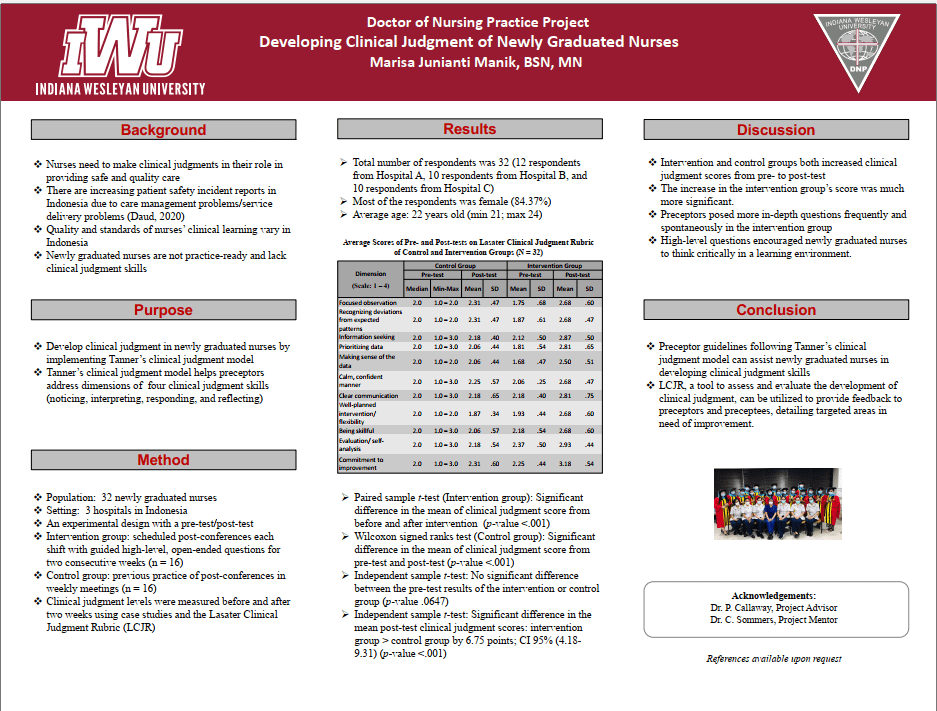- Resource Types
- Resource Languages
- Institutional Repository
 Visit the home page
Visit the home page
About Site Language
WHDL is viewable in multiple languages. Use the pull-down menu to select a language to view the site.
I changed my language, but I’m still seeing resources in the other languages?
If a resource or text has not been translated into your selected language, it will appear in the initially added language. We are always looking for help translating these resources. If you can help, contact us!
WHDL - 00016498


A critical component for nurses to provide safe and quality care with strong patient outcomes is clinical judgment. Nurse leaders indicate that many newly graduated nurses are not practice-ready and enter practice with varied clinical experience. This project aimed to develop clinical judgment in newly graduated nurses by implementing Tanner’s clinical judgment model. The project followed an experimental design with a pretest-posttest. Thirty-two newly graduated nurses from three private hospitals in Indonesia were involved in this project. The intervention group had scheduled post-conferences with their preceptors following Tanner’s clinical judgment model’s guidelines with high-level, open-ended questions for two consecutive weeks. An independent samples t-test compared the pre-and post-test scores of the Lasater Clinical Judgment Rubric (LCJR). The results indicated a significant difference in the mean clinical judgment scores between the intervention and control groups after two weeks of intervention, where the intervention group scores were higher than the control group with a significance value <.001 with a mean difference of 6.75 and CI of 95% (4.18-9.31). The use of Tanner’s clinical judgment model showed a significant increase in clinical judgment scores. Preceptors and nursing leaders in the hospital should continue to give newly graduated nurses the opportunity to develop clinical judgment skills and be confident during their transition period.
10 Resources